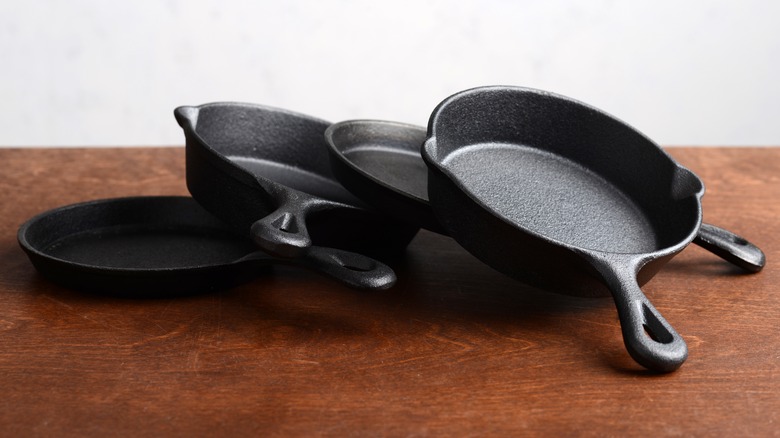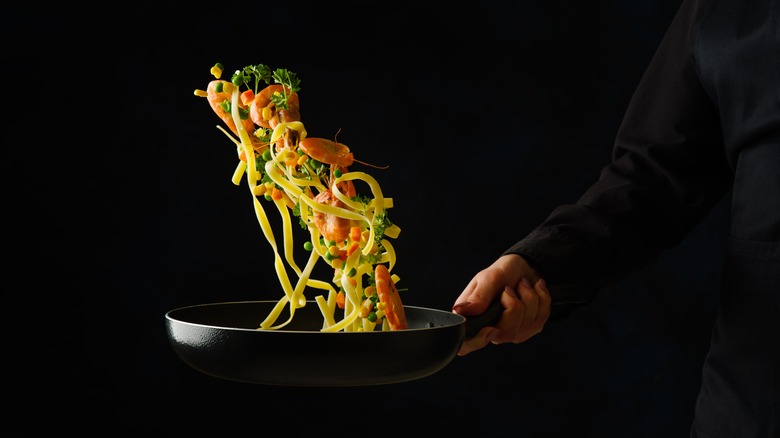The Major Difference Between A Skillet And A Pan
Every cook should have certain basic tools on hand, no matter how much experience (or lack thereof) they have. Many professional chefs emphasize the value of a high-quality knife, but that only scratches the surface. Cook Smarts encourages all home cooks to equip themselves with a cutting board, measuring spoons, measuring cups, a vegetable peeler, and a colander, to name a few. Depending on the meals you cook most often, you may want to pick up some specialized kitchen tools, such as a boning knife or sous vide cooker.
And we haven't even touched on cookware yet, perhaps the most obvious of all kitchen necessities. Pots and pans are the incubators in which ingredients mingle and come to life. However, pots and pans are awfully generic terms that don't suggest how you might use them. There are stock pots and crock pots. Once you get to pans, you'll quickly realize that there are far more varieties than you expected. You've got saucepans and frying pans. Then you've got skillets on top of that. Confused yet? If you thought pans and skillets were the same things, you're not alone. In fact, the terms are used interchangeably in some instances. However, there are subtle differences between skillets and pans that you should know before selecting one for your next meal.
Depth of character
Depth is the key difference between skillets and pans. Per MasterClass, a skillet is deep and wide with a flat bottom and sloped edges. They are perfect for braising because you can use them to both sear and slow-cook. They also note that home cooks can use frying pans and skillets interchangeably because frying pans are shaped like skillets but shallower and thinner so it heats oil faster.
The differences are a bit more pronounced when comparing different kinds of pans. Wayfair breaks down some of the most essential kitchen pans, and we should start with sauté pans. The main difference is that sauté pans have straight sides, so the food must be manipulated with utensils. Skillets and frying pans are sloped so they are better for tossing. The straight edges of a sauté pan also give it greater volume, which is especially important when you're dealing with liquids that might splash. A saucepan, Wayfair notes, is shaped like a sauté pan, but has much taller sides. You can think of a saucepan as the offspring of a sauté pan and a pot, and, true to its name, it is ideal for making sauces. While you may be able to swap a skillet for a frying pan, the same can't be said for sauté and saucepans, so stock your kitchen wisely.

